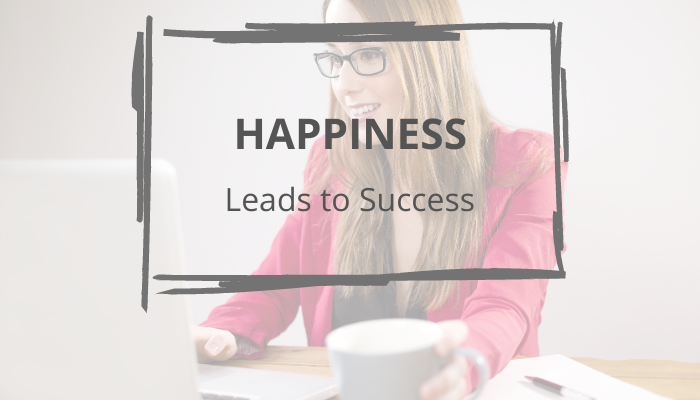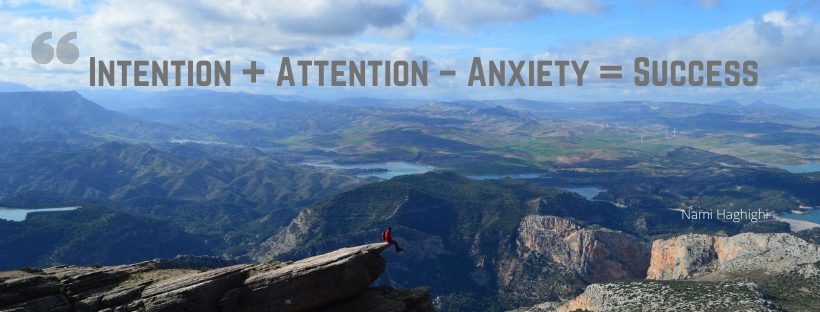The Problem with Putting Success First
A couple of weeks ago I shared a video of a TEDx talk on my Facebook page. I’ve used it in training workshops as well. You may already know it.
Shawn Achor is the well-respected bestselling author of The Happiness Advantage (2010) and Before Happiness (2013), and one of the world’s leading experts on the connection between happiness and success. His TEDx talk on ‘The happy secret to better work’ has been viewed over 13 million times.
The Old Way: Work Harder for Success
We are taught that to be successful, we need to do well at school, to work harder and longer hours for the things we want. When we push hard for things we will be successful, and thus happiness will follow as a kind of well-earned reward.
But every time we achieve something, get the grades, get the raise, get the girl / boy, the measure for success gets changed. Happiness is always on the other side of achieving these shifting goals.
Happiness gets pushed over the cognitive horizon: we keep chasing it by trying to achieve our goals. Yet by doing so, we undercut our emotional and mental well-being, as well as our chances of success and achievement.
The New Way: Positivity Leads to Success

Photo by Derek Thomson on Unsplash
We have discovered that our brains don’t work that way. We need to reverse the equation and put being happy first. When we are happy, when our mindset and mood are positive, we are more motivated, smarter and more successful.
Our brains do better in everything worthwhile and meaningful when we are in a positive state: we are more creative, engaged, enthusiastic, motivated, productive and resilient. We learn better, retain more, have greater clarity, make better decisions, and become more successful at achieving the things we want.
And we appreciate our successes more, leading to greater natural happiness, and more energy to take on the next challenge.
By being happy first, enjoying life and embracing stress as a challenge rather than a threat, our brains are able to work faster, better and more intelligently.
The Dopamine Advantage
Optimism boosts dopamine levels in our brains. Dopamine is known as the feel-good hormone: it makes us feel good about ourselves and others. It also switches on the learning centres in our brains, allowing us to adapt to the world in more creative ways. Dopamine is behind the greater successes that come as a result of being happy, optimistic, upbeat.
So how do we get more dopamine into our brains? How do we become happier if not through success first?

Photo by Ben White on Unsplash
Rewiring the Brain to Positivity
We can train our brains to become more positive. Shawn Achor suggests, as do many others, that we can retrain our brains in just two minutes a day over three weeks. It’s often said that it takes two weeks to break a habit, and two weeks to make one, but the truth is much wider than that, with 21 days at the lower end. But it’s a good place to start.
Look for three new things every day to be grateful for. After three weeks of actively watching out for things to feel good about, your brain will begin to retain a way of looking at the world that is more optimistic, seeking the positive first.
And if you write them down – perhaps keeping them in a Happiness or Gratitude Jar – you will set the new behaviour more quickly, and have the fun of rereading your notes every week or month.

Photo by Freshh Connection on Unsplash
Several companies and organisations do this, including some I’ve worked with, encouraging their staff to drop positive notes into a team jar, perhaps about their own successes, things they want to applaud in others, or things they are just pleased to observe around them. Each month, the notes are read out at a team meeting, cementing the dopamine effect into the daily work schedule. Happiness first equals greater success.
I’ve mentioned journaling in other posts, and this is another way of reliving positive experiences. Other ways of building up our happiness muscle is exercise, as it teaches the brain that our behaviour matters. Meditation creates a quiet space and an off switch for the cultural ADHD of multi-tasking and busy-ness.
Other ways include random acts of kindness, such as emailing a colleague to thank them or simply to acknowledge them for their input – focussing on process as much as outcome. Paying attention, noticing the good stuff. Consciously replacing a negative thought with a positive one; not indulging in put-downs, either as ‘banter’ or as negative self-talk. Actively seeking out opportunities to be kind to ourselves and others. These all encourage dopamine to flow through the brain, building our resilience and our creativity.
And these ripples of positivity create opportunities for greater success as a consequence.








